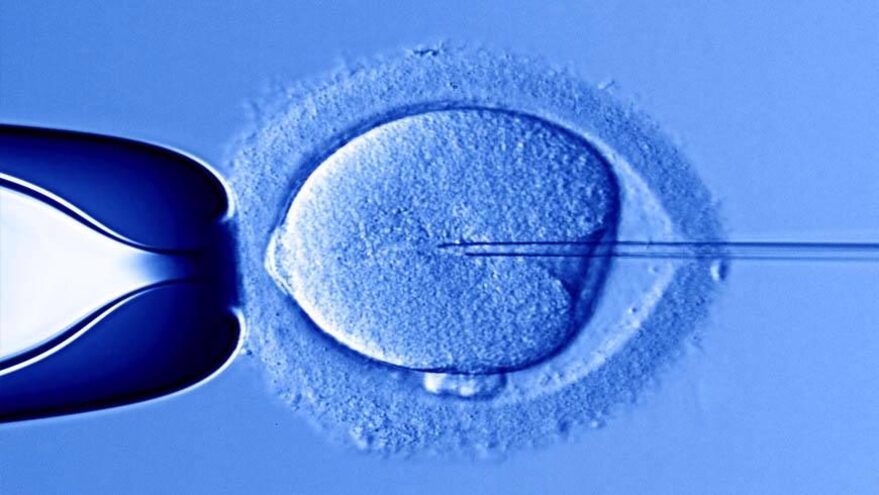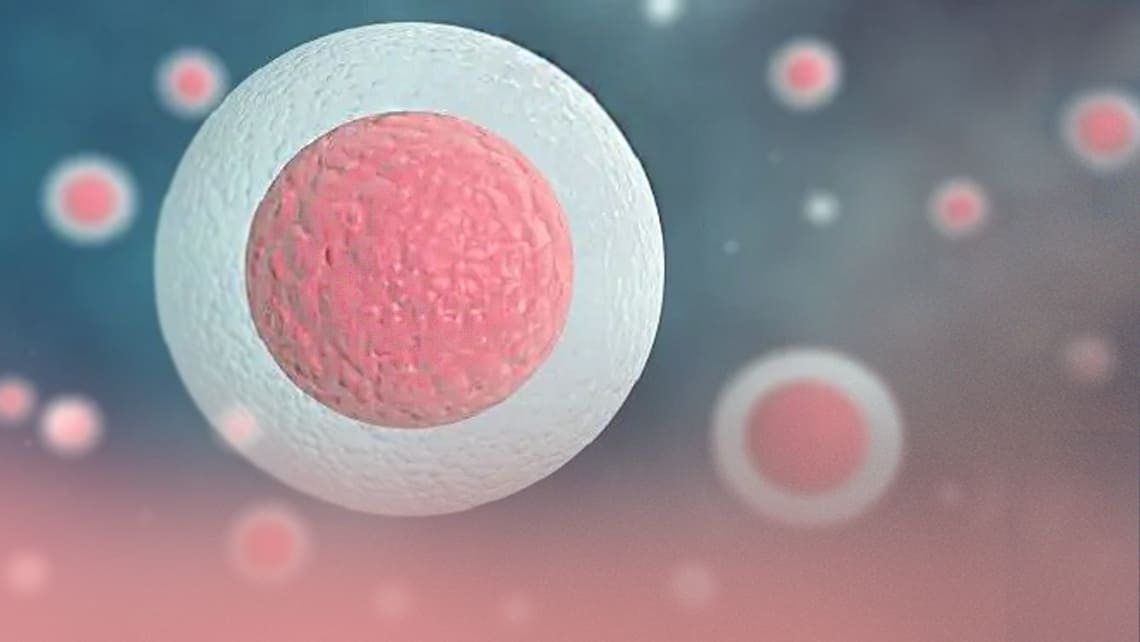The transition from fertilization to the establishment of pregnancy is a remarkable journey. A pivotal moment in this process is the implantation of the blastocyst into the uterine wall. Understanding this vital phase is crucial for grasping how life begins. In this article, we will explore the significance of “the blastocyst embedding in the uterine wall,” shedding light on this fundamental aspect of human development.
Table of Contents
ToggleThe human reproductive process is nothing short of extraordinary. Among its complex stages, the implantation of the blastocyst stands out as a crucial milestone. Comprehending this process not only deepens our understanding of the origins of life but also informs discussions surrounding fertility, pregnancy, and various reproductive challenges. This comprehensive article will examine the captivating journey of the blastocyst as it implants in the uterine wall, detailing the stages, significance, and implications of this vital step.
Defining a Blastocyst
The Transition from Fertilization to Blastocyst Formation
Life begins when sperm fertilizes an egg, creating a zygote. This single cell initiates a series of divisions, transforming into a cluster known as a morula. As development progresses, it evolves into a blastocyst, a hollow sphere of cells containing an inner mass that will eventually develop into the baby.
Structural Composition of a Blastocyst
A blastocyst comprises two primary layers: the outer layer, known as the trophoblast, which will eventually develop into the placenta, and the inner cell mass, which will become the embryo. Inside the blastocyst lies a fluid-filled cavity called the blastocoel, providing an essential environment for cellular growth.
The Process of Blastocyst Implantation in the Uterine Wall
Timing of Implantation
Implantation typically occurs between six to ten days post-fertilization. During this critical window, the blastocyst travels through the fallopian tube towards the uterus, seeking an optimal site to attach itself to the uterine lining.
Step-by-Step Breakdown of Implantation
Initial Apposition
The blastocyst first establishes a light attachment to the uterine lining. This initial connection is relatively loose, bringing the blastocyst close to the wall of the uterus.
Adhesion Phase
Following the initial connection, the blastocyst forms a more secure attachment to the uterine wall. This strengthened connection enables it to begin embedding itself into the lining.
Invasion Stage
During this phase, trophoblast cells start to multiply and penetrate deeper into the uterine lining, creating a stable anchorage. The blastocyst embeds itself into the wall, initiating its nutritional connection with the mother, which facilitates further development.
A Deeper Understanding of Blastocyst Implantation
Exploring the Role of the Blastocyst in Implantation
Before examining the implantation process, it is essential to understand what a blastocyst is. A blastocyst is an early-stage embryo that forms approximately five to six days after fertilization. At this stage, the embryo consists of around 70 to 100 cells, organized into two main components: the inner cell mass, which will develop into the fetus, and the trophoblast, which will eventually become the placenta.
Key Characteristics of the Blastocyst:
- Forms shortly after fertilization during early embryonic development.
- Comprises the inner cell mass (future fetus) and the trophoblast (future placenta).
- Typically measures between 0.1 to 0.2 millimeters in diameter, making it visible only under a microscope.
The Importance of Implantation
Implantation is the critical process through which a fertilized egg, now referred to as a blastocyst, attaches itself to the uterine lining. This step is essential for establishing a pregnancy, marking the beginning of nutrient and oxygen transfer from the mother to the embryo.
Significance of Implantation in the Pregnancy Journey
Implantation plays a vital role by initiating the formation of the placenta, which supports the embryo by supplying necessary nutrients and eliminating waste products. Without successful implantation, a pregnancy cannot be established.
Visual Representation of the Implantation Process
The Power of Visuals in Understanding
GIFs serve as effective tools for illustrating the implantation process. They provide clear representations of how a blastocyst travels to the uterus and attaches itself to the uterine wall.
Implantation in Motion
An animated GIF can effectively help viewers visualize the various stages of the blastocyst’s journey, culminating in its successful implantation into the uterine wall.
A Global Perspective on Research and Innovations in Implantation
Advancing Knowledge of Blastocyst Implantation
Researchers around the world are committed to enhancing our understanding of the implantation process and improving treatments for individuals facing conception challenges. Recent technological and medical advancements have yielded valuable insights into the mechanisms of implantation and effective strategies to support it.
Innovations in Fertility Treatments
Ongoing research is leading to new techniques and therapies for individuals experiencing implantation difficulties. For instance, in vitro fertilization (IVF) has enabled numerous couples to achieve successful pregnancies by facilitating the proper implantation of healthy blastocysts.
The Importance of Successful Blastocyst Implantation
Implantation is a critical phase in establishing pregnancy. Without effective implantation, pregnancy cannot proceed, even if fertilization has occurred. This stage represents the initial interaction between the blastocyst and the mother’s body, fostering the necessary connection to nurture the developing fetus throughout the pregnancy.
Key Insights:
- Implantation is essential for pregnancy progression beyond the initial stages.
- Initiates communication between the embryo and the mother’s body.
- Successful implantation triggers the release of crucial pregnancy hormones like hCG, vital for maintaining pregnancy.
A Step-by-Step Overview of the Implantation Process
Journey to the Uterus
After fertilization, the blastocyst begins its journey through the fallopian tube, ultimately reaching the uterus. This journey typically takes about six to seven days.
Adhering to the Uterine Wall
Upon arriving in the uterus, the blastocyst attaches to the uterine lining. This process involves the trophoblast cells embedding into the endometrium (the uterine lining), marking the initiation of placenta formation.
Development of the Placenta
Once implanted, the blastocyst commences the development of the placenta, which will provide essential nutrients, oxygen, and waste removal for the embryo throughout the pregnancy.
The Crucial Role of Implantation
The Beginning of New Life
Implantation signifies the onset of new life, establishing a direct connection between the embryo and the mother’s blood supply.
Progression of the Embryo
Successful implantation allows the embryo to start transforming into a fetus, as the uterine environment offers ideal conditions for growth and development.
Formation of Organs and Systems
After implantation, the embryo initiates the formation of vital organs and systems, laying the groundwork for future growth and development.
Factors Affecting Implantation Success
Health of the Female Reproductive System
The overall health of the female reproductive system is critical for successful implantation. An optimal hormonal balance and a well-prepared uterine lining are essential for this process.
Maternal Age Considerations
Age can significantly influence fertility and the likelihood of successful implantation. Older women may face increased challenges due to age-related changes in egg quality and the uterine environment.
Lifestyle Choices Impacting Reproductive Health
Engaging in healthy lifestyle practices—such as maintaining a balanced diet, regular physical activity, and avoiding smoking or excessive alcohol consumption—can positively affect the success of implantation.
Medical Conditions and Their Effects
Certain health issues, such as endometriosis or polycystic ovary syndrome (PCOS), can adversely impact the chances of successful implantation, complicating the reproductive process.
Implantation Within the Context of In Vitro Fertilization (IVF)
Overview of the IVF Technique
In vitro fertilization (IVF) is a method that involves fertilizing eggs outside the woman’s body before transferring the resulting embryos into the uterus.
Procedure for Embryo Transfer
During IVF, a developed blastocyst is carefully placed into the uterine cavity. The success of this transfer depends on the embryo’s ability to implant effectively and the overall health of the uterine lining.
Success Rates of Implantation in IVF
Success rates for implantation during IVF can vary widely, but advancements in techniques and medications have led to improved outcomes over time.
Utilizing Visual Aids for Understanding
Educational GIFs and Their Benefits
GIFs serve as effective tools for visually demonstrating the implantation process, illustrating how the blastocyst attaches to the uterine lining.
Detailed 3D Animations for Clarity
Three-dimensional animations provide a more comprehensive representation of the implantation process, allowing for a clear view of how the blastocyst embeds itself within the uterus.
Comparing Different Visual Representations
Employing a combination of GIFs, 3D animations, and real images can enhance understanding by providing both conceptual illustrations and actual visual contexts for the implantation process.
Challenges of Implantation and Reproductive Health
Understanding Failures in Implantation
Unfortunately, implantation does not always succeed. When it fails, it can lead to early pregnancy loss, often occurring before a woman is even aware she is pregnant. Understanding the causes of implantation failure is essential for addressing reproductive challenges.
Early Pregnancy Loss Causes
A significant number of early miscarriages arise from implantation failures. These can result from chromosomal abnormalities within the embryo or complications with the uterine lining.
Infertility Related to Implantation Issues
Recurrent implantation failure may contribute to infertility. In such cases, medical intervention may be necessary, including hormonal therapies or assisted reproductive technologies like IVF.
Ectopic Pregnancy as a Complication
In rare cases, the blastocyst may implant outside of the uterus, typically in the fallopian tube. This condition, known as an ectopic pregnancy, can pose life-threatening risks and requires immediate medical attention.
Conclusion: The Significance of Blastocyst Implantation
The implantation of the blastocyst in the uterine wall is a crucial milestone in the journey of human development. Understanding this process enhances our knowledge of reproductive health, informs discussions on fertility challenges, and emphasizes the significance of successful implantation for establishing pregnancy. As research advances, our grasp of this intricate process will continue to evolve, leading to improved reproductive health practices and greater awareness of the factors influencing implantation success.



